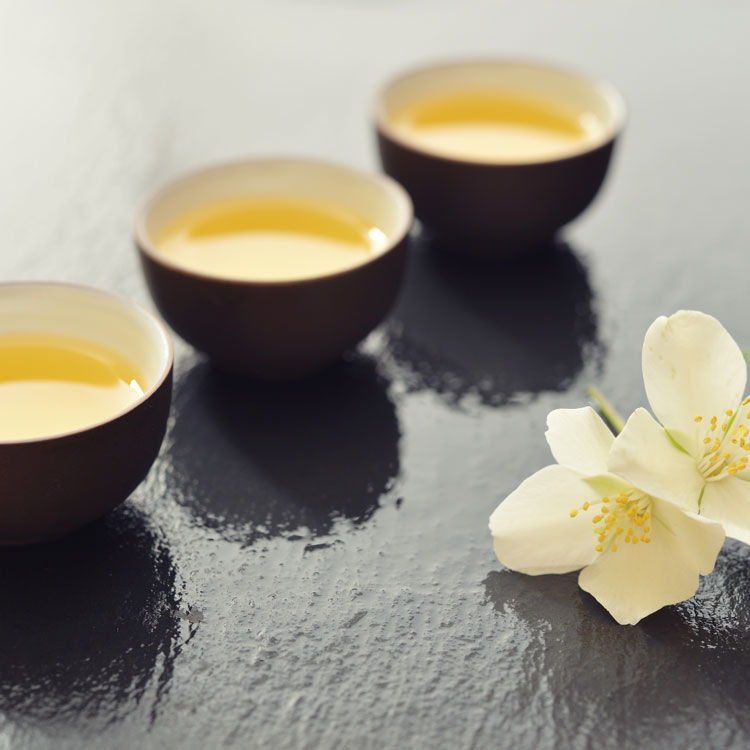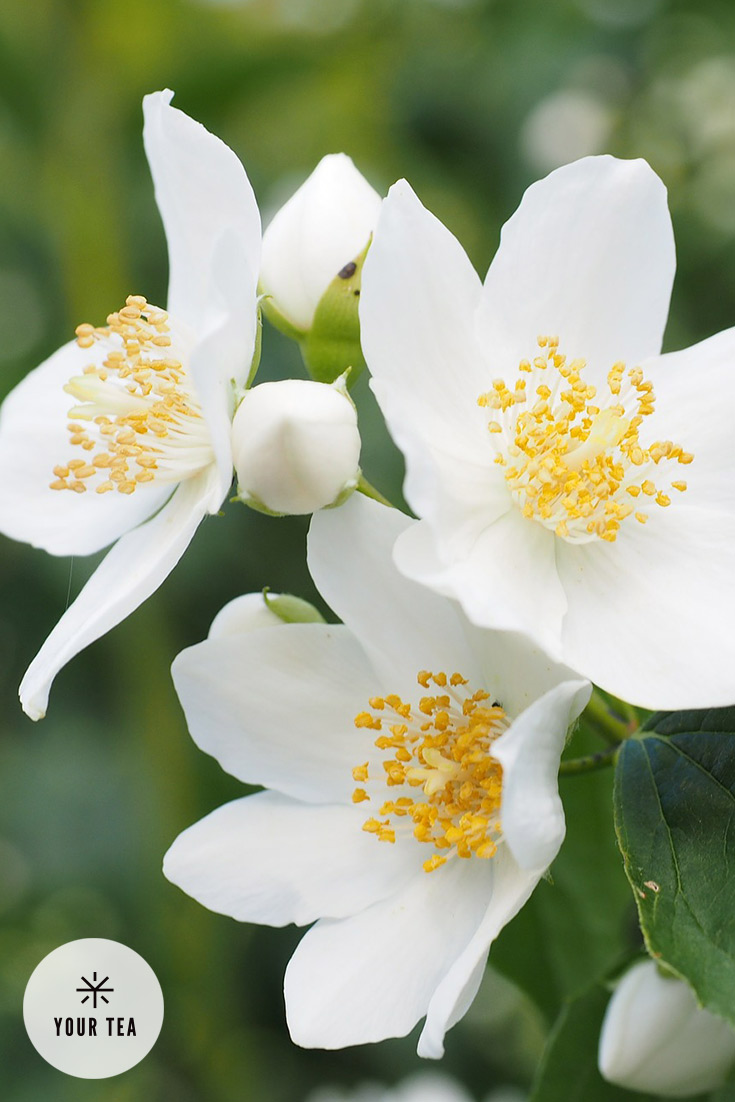Jasmine tea has been around for over 1,000 years! It was first produced in the South-Song Dynasty in China, and by the early 1900s, the blend was a popular trade item. Interestingly enough, jasmine flowers originated in Persia (now Iran), but jasmine has been planted in China for more than 1700 years—starting with the Silk Road.
Jasmine tea is surprisingly difficult to make. Although it is typically blended with green tea, jasmine can also be added to oolong, white, and black teas. It’s created through a complicated scenting process. In the summer months—June, July, and August—tea leaves and jasmine blossoms are placed together in thick alternating layers within a scenting house. As the jasmine blooms, the fragrance and flavor of the flower is absorbed into the tea leaves.
It sounds simple, but jasmine scenting requires years of experience and weeks of careful labor. The jasmine buds have to be hand-plucked in the early afternoon while the sun is still out, and there is no dew on the flower. The pickers can only choose buds that will bloom that evening and then must place them in a dry place until the evening when they will finally open and bloom in the cool night air.
It takes four hours for the scenting process to be complete. The quality of jasmine tea is based on the quality of the tea leaves used, as well as the scenting process. Expensive jasmine teas can require the scenting process to be repeated up to seven times.
Jasmine tea is also incredibly good for you. It can improve your immune system, reduce stress, and help your digestion. It has also been found to be antibacterial and rich in antioxidants.






